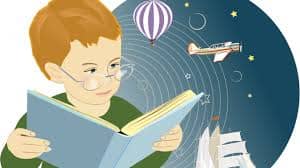
We often associate learning to read with fictional stories. However, even for young students, most of what they read in and out of school is not in the form of a story.
It might be directions for completing a science lab, a chapter on the Civil War in a history textbook, or a recipe for making chocolate chip cookies. Many teachers and parents often assume that skills children have for reading fiction also work well with the many kinds of nonfiction.
These two types of reading, however, are quite different, so the ways students read them should be different as well.
Strategies Can Be Taught and Practiced
Non-fiction reading skills must be taught and practiced. There are countless different kinds of strategies for teaching to read non-fiction. Below are three such strategies.
- KWL provides a great way for students to realize what they already know about a topic before reading.
- THIEVES provides students with an effective routine for getting to know the text before they start reading.
- Finally, Sticky Notes help students react to the reading and keep track of their thinking.
KWL
KWL is a set of questions students ask themselves before reading to help them pull to the surface what they already know about the topic. Each letter in KWL stands for one of these questions:
- What do I already know about this topic?
- What do I want to learn about it?
- Once I finish reading, what did I learn?
Usually students have some knowledge already about what they are going to read, and the more they can remember before they dig into the text the more they can connect what they know with what they will be learning. This is a recipe for better overall understanding of what they read.
THIEVES
You can learn quite a lot from a non-fiction reading before you even begin the first paragraph. You just have to become one of the “Thieves.”
THIEVES is a strategy for previewing the reading and learning all you can before you start actually reading. It gives kind of a roadmap of what the reading will cover, which helps readers make better sense of it all.
Each letter in THIEVES tells what to look over before the reader starts going from start to finish.
- Title
- Headings
- Introduction
- Every first sentence of every paragraph
- Visuals and key vocabulary
- End-of-chapter-questions
- Summary
While not every non-fiction reading has all of these parts, practice with THIEVES can make a big difference with helping students understand what they are reading.
Sticky Notes
Sticky notes are not only fun and colorful, but they can really help a reader keep track of their thinking as they read. Using sticky notes while reading helps them better understand and remember what they read.
Confused by a word or sentence? Mark it with a sticky note! Find the answer to one of the questions at the end of the chapter?
Practice Makes Perfect
No one is born a great reader of non-fiction. Like anything else, it takes practice. The more children practice the strategies above, the more it become second nature when they are reading any kind of non-fiction. With non-fiction reading being such an important part of our world, it is important not to leave this critical kind of reading to chance.
We offer a number of non-fiction reading comprehension worksheets in our free worksheet center for your kids to practice.

